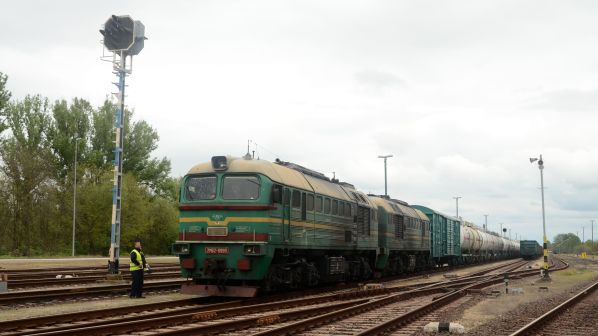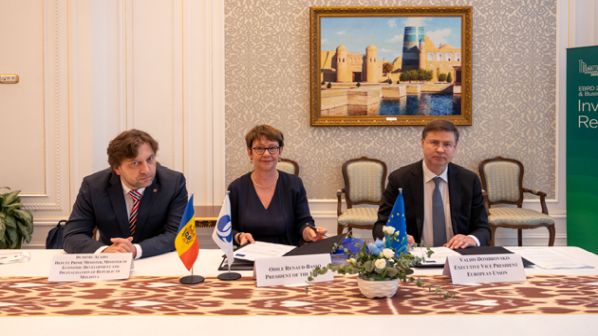A study published by the European Commission (EC) and the European Investment Bank (EIB) has proposed that 1435mm-gauge track should be laid alongside existing 1520mm-gauge lines to Lviv and Chiṣinău as the first step to improving rail connections to Ukraine and Moldova from the European Union (EU).
As part of the EU’s Solidarity Lanes action plan, in September 2022 DG Move commissioned the EIB’s technical advisory service Jaspers to prepare a prefeasibility study for a new standard-gauge corridor connecting Krakow in Poland with Lviv in Ukraine, and from Iasi in Romania to Chisinau in Moldova.
The scope of the study scope was subsequently widened to producing a strategy for the integration of the 1520mm-gauge networks of Ukraine and Moldova with the EU 1435mm-gauge network, with the primary objective of creating a system that is interoperable, adaptable to a new economic landscape and competitive with other transport modes.
The EC has also proposed extending the Trans-European Transport Network to Ukraine and Moldova. Under the proposed revision of the TEN-T Regulation all new lines would be built to 1435mm, and key routes of other gauges converted to the EU standard.
The study assessed a range of options, from full conversion to 1435mm of the rail networks in Ukraine and Moldova through to upgrading the 1520mm-gauge infrastructure.
A principal conclusion and recommendation of the study is to develop a new backbone 1435mm network, to be operated in conjunction with the existing 1520mm network. The 1435mm system would carry higher-speed traffic such as international passenger services and intermodal freight, while the 1520mm network would cater for local and regional passenger traffic as well as bulk freight.
The study says that the development of the 1435mm network in Ukraine and Moldova would be implemented in a phased manner from west to east to connect the largest urban centres to the 1435mm network future economic development.
For each line, the study establishes where either 1435mm or 1520mm should be provided or where dual gauge is required. This is based on a number of factors including cost, combined network-wide operational factors for both gauges and the timescale for project development and implementation.
Also taken into consideration was the need to maintain capacity on the current 1520mm network during the construction and operation of the new lines.
Top priority is given by the study to providing 1435mm on the route from the Polish border at Medyka to Lviv, and on the line from Ungheni on the Romanian border to Chisinau.
For Medyka - Lviv, the study selects as its preferred option providing a single 1435mm track alongside the existing 1520mm double track line which would be upgraded. This option is estimated to cost €434m and is preferred as “the level of traffic in this section is significant and thus a reduction of existing 1520mm-gauge capacity is not advisable,” the study says.
For similar reasons, the preferred option for the Moldovan spine route running from Ungheni on the border with Romania to Chisinau is to lay a single 1435mm track alongside the existing single 1520mm track. This is estimated to cost €264.8m, with no investment in the 1520mm infrastructure beyond that already planned by the Moldovan authorities and for which funding appears to have been already secured, the study says.
“Building the first EU rail gauge in Ukraine and Moldova, linking their railways with Poland and Romania, will bring them closer to the EU single market,” says EU commissioner for transport, Ms Adina Vălean.
“With this study, we are setting the scene for long-term solutions, supporting Ukraine in its post-war trade and reconstruction.”
“Extending the standard gauge of the European railway network to Ukraine and Moldova will facilitate the movement of goods and services, helping the two countries to integrate more quickly into the EU market and accelerating Ukraine’s post-war recovery,” says EIB vice-president, Mr Teresa Czerwińska, responsible for EIB operations in Ukraine and Moldova.
“Developing modern transport links is a way for us to foster the region’s economic growth and provide steadfast support to Ukraine and Moldova on their paths to EU integration.”
For detailed data on rail infrastructure projects around the world, subscribe to IRJ Pro.




